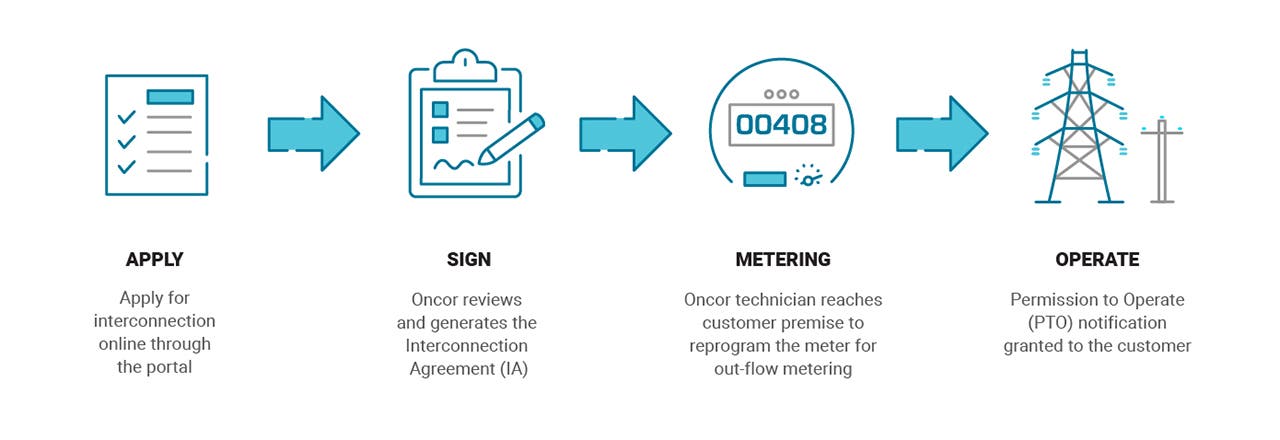Whether you're a homeowner or business owner, here's an overview of steps to help you start taking advantage of all the benefits offered by solar power.
An installer plays a key role in the interconnection process, so selecting one is an important decision that can take time. You may want to talk with more than one installer to learn about the installation process and to educate yourself before making a selection.
Once you've selected an installer, they will communicate with Oncor, file an application for either a certified residential system or certified small commercial system, and begin the interconnection process. The time frame for installation can range from a few days to several months.
Oncor will review your application, perform a study to ensure a safe and reliable interconnection to the grid, and prepare an interconnection agreement to be signed by all authorized parties. Once Oncor provides permission to operate, meter information—including information about any surplus generation—will be provided to retail electric providers with the first full billing cycle (30-60 days). An advanced meter is required to measure surplus generation sent to the grid.
You can choose a Retail Electric Provider (REP) and compare plans by going to powertochoose.org. It is the customer's responsibility to communicate with their retail electric provider about buy-back plans or energy credits for surplus energy that is produced, however, you are not required to participate in any buy-back programs. Questions you should ask your REP include:

Homeowners can benefit from a rooftop solar system producing 'homegrown' electricity. These systems offset a portion of your electric usage. Some retail electric providers offer buy-back plans for surplus generation sent to the grid. Customers should compare plans carefully to maximize their savings on electric usage. Oncor has a solar photovoltaic program that helps customers find service providers, and offers incentives that may offset initial costs. Visit takealoadofftexas.com to learn more about participating.
When the sun isn't shining (night, clouds, shade), a house may require power from the grid. In fact, most homes will still need power from the electric grid, and there will continue to be a delivery charge on customers' monthly bills to pay for the connection to the grid.
If you are producing more energy than you are consuming, then the surplus energy goes to the grid. Conversely, if you are consuming more energy than you are producing, then all of your generated energy is being consumed by you. Any additional energy requirements you have will be provided by the grid. The figure below illustrates the basic scenario for power flow between a DG site home and the grid.
From time to time, you may have questions about different aspects of your private solar rooftop system.
Call us at 1.866.728.3674 Mon. - Fri., 7 a.m. to 7 p.m. (CT) or email dg@oncor.com.
For certified systems, the general processing time for complete applications is around three to four weeks. The processing time for systems that are not certified will vary dependent on particular aspects of the application.
Oncor's tariff for retail delivery service provides a chart showing the various Oncor study fees for different types of application requests. In general, there are no pre-interconnection study fees for small inverter-based systems.
SOCIAL MEDIA AND WEB HOUSE RULES